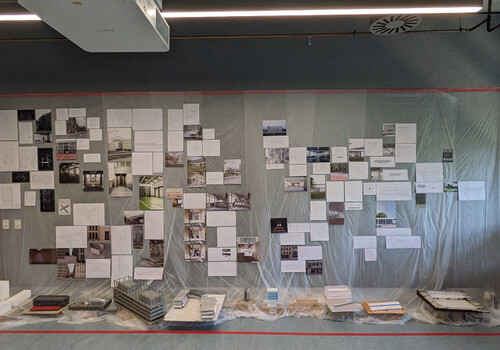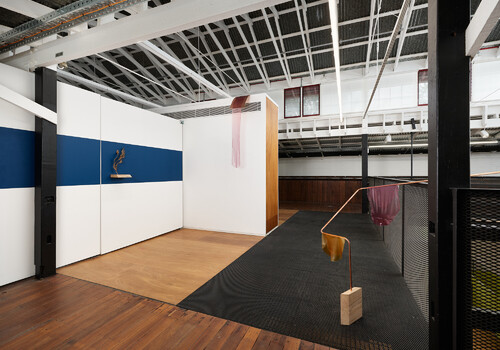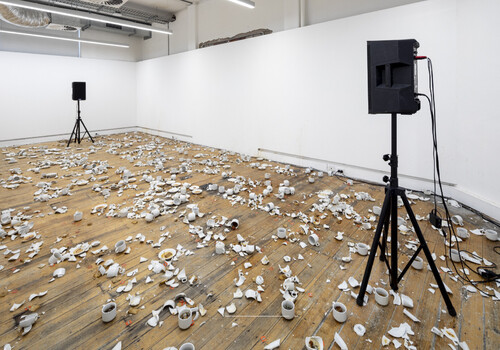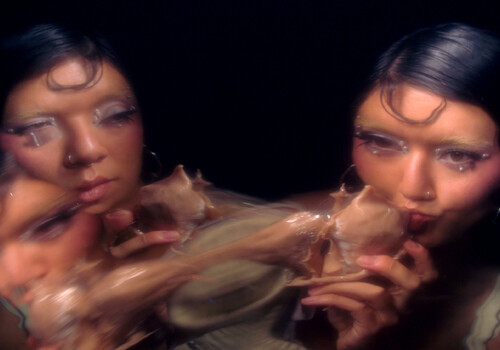Fine Art, RMIT
By Jacinta Little-Woodcroft
I am, in fact, lost at all times. In truth, I cannot be sure if I saw everything. The conglomeration of graduate work from Bachelor to Honours to Masters at the RMIT graduate exhibition is reflected through the disjointed maze of the exhibition space. The absence of authoritative control over the visitor’s experience is at first disarming and later becomes enjoyable. Am I supposed to be here? I happen upon—and I’m treated to—the haphazard space. The dappled light is tinted and diffused by the stained-glass windows that dominate the upper levels of Buildings 2 and 4.
Still finding my bearings, I find I am suddenly in the corner of a room, eye level with Anabelle Stonehouse’s Come Hither. Quite distinctly vaginal, virginal, yet lusty, the purity of the snow-white porcelain figures feels conceivably corrupted, and yet the insinuation of a “come hither” gesture is resolute in its explicitness. At once delicate and thorny, it is an invitation with a warning. The manicured organic structures are almost bestial against the factory-ready, residential-cum-clinical tiling, made more vivacious by contrast. The entire surface is so smooth and opaque it looks cold.

Anabelle Stonehouse, Come Hither, 2024, porcelain, ready-made tiles, ply wood, silicone, acrylic nails, sugar icing, pearl lustre.
Ruby-red acrylics jut out into the physical expanse between object and viewer, claw-like and monstrous in their configuration, yet assertive in their resolve. It is a reappropriation and reclamation of the historically inherent otherness of women. As soon as I begin thinking “I want to touch this,” another thought forms concurrently: “I’m not supposed to touch this.” I wonder if I’ve accidentally arrived at a version of the point. Leave it be. Come Hither is a challenge. Tiled neatly into a corner for refuge, as if acting on instinct.
I encounter those familiar white tiles again in Tilly Parsons’ series My Mum is a Witch. In one particular photograph, the tiles, an icon of domestic labor and cleanliness, serve to symbolically smother the feminine energy of our cyclical moon, embodied by Parsons’ mother. The goddess Luna is subjugated in a bathtub.
Despite elements of sorrow, to my delight, I don’t really find despair in these images. Injustice, yes, but this is kind of a celebration—a noticing of a mother by a child in retrospect. Parsons is neither voyeur nor director. The collaborative nature of the process and the agency of the subject aids in the success of the series. The fantastical innocence of a mum playing dress-ups contends with the resulting eeriness of the final shots; there is something sinister about a mask.
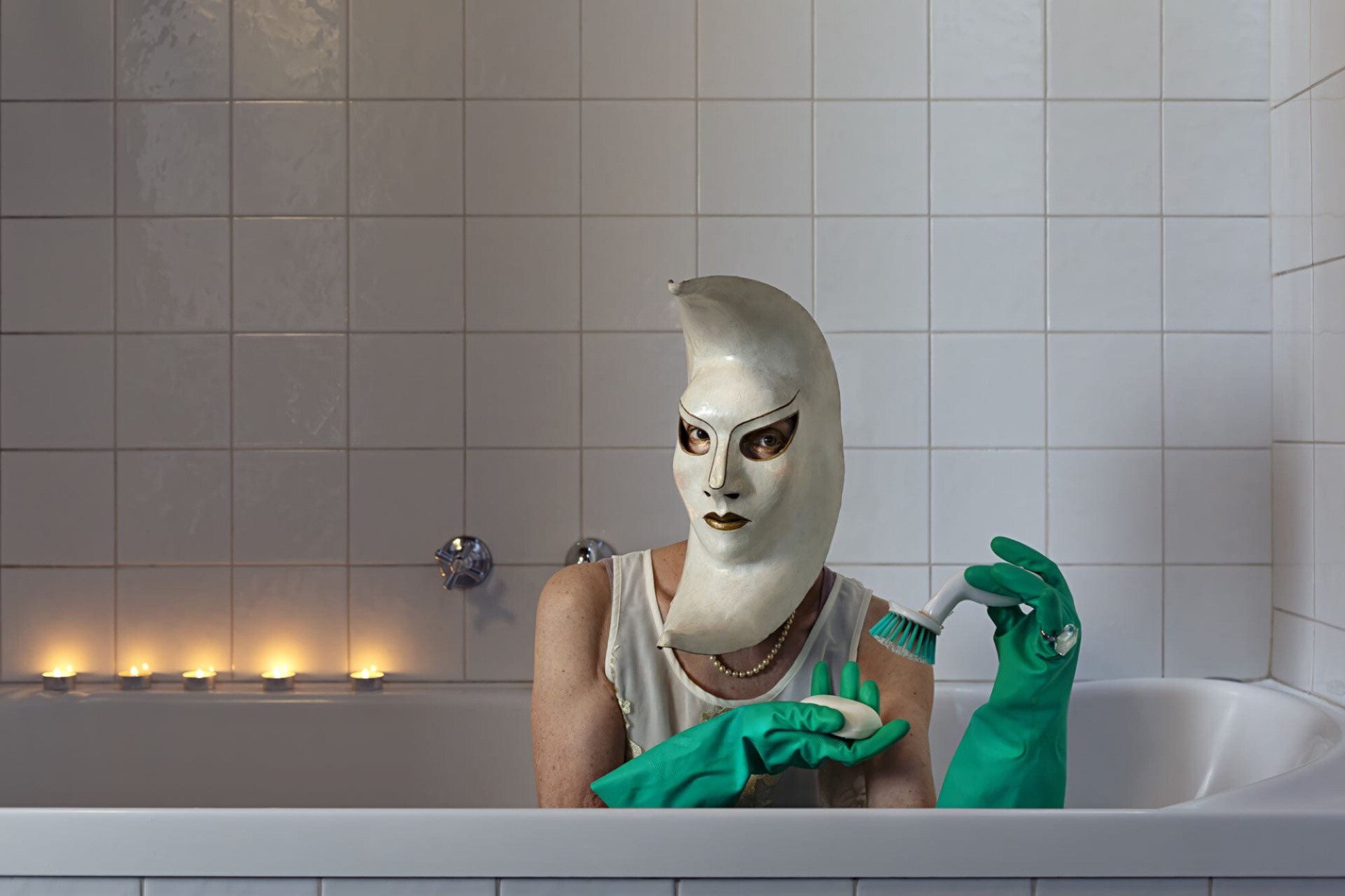
Tilly Parsons, My Mum is a Witch, 2024, photographic print.
When I sit cross-legged in front of Celline Mercado’s Breathing Room, I am still thinking about Tilly’s mum. At this level and in this light, I will ignore the mechanics of the installation and decide that the furniture is hovering as if by magic. Resigned to not knowing where I am, my visit has been strangely ruminative. Once airborne and softened by yarn, the physical weight of Breathing Room no longer exists.
There is an ethereality to Breathing Room, an otherworldliness that is also palpable in the works of Stonehouse and Parsons. It too denotes the power of acknowledging the unconscious. These works surpass tangibility and find clarity through intuition. A divine response to not only the physical but emotional labor that comes with identifying and resolving imbalance.
I imagine the process, the hundreds of tedious hours that went into its wrapping, and wonder if that too was meditative. Or was it vapid and repetitive? Or is it all those things at once? An exhaustive devotion, perhaps, to the perpetual pursuit of redefining power structures.

Celline Mercado, Breathing Room, 2024, bed frame, desk, swivel chair and table lamp wrapped in wool, stainless steel wire rope, dimensions variable. Photo courtesy of the artist
Jacinta Little-Woodcroft is an art writer based in Naarm/Melbourne.







